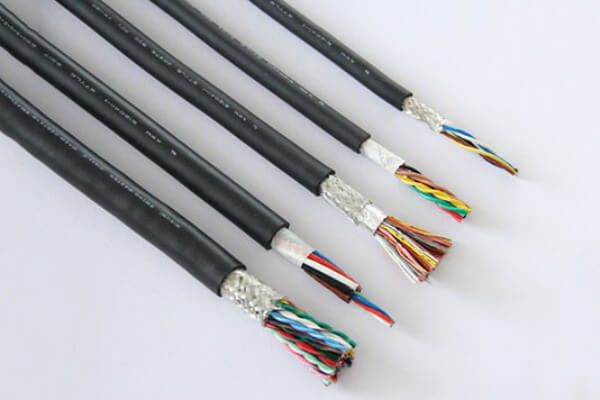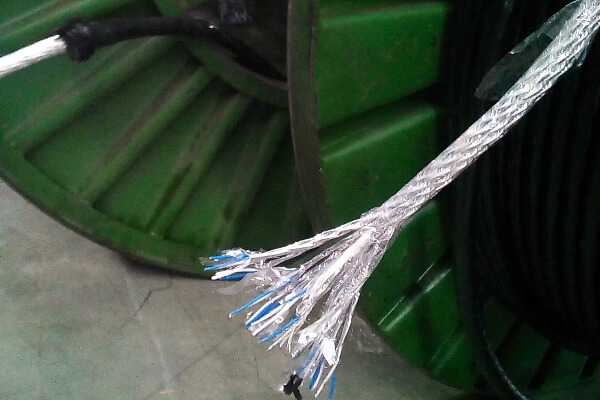Control cables and instrumentation cables are two types of cables commonly used in the power engineering sector. Although they look similar on the outside, they differ significantly in terms of construction, use and performance.
Control cables are a special type of instrumentation cables. They play an essential role in industrial electrical systems, buildings and other sectors. In this article, we will examine the characteristics of control cables and instrumentation cables, their differences, and we will give advice on choosing the right type of cable.
Presentation of Câbles of Csorry
According to their name, control cables are different from traditional power cables. The main role of control cables is to control electrical equipment.
Control cables are unique in that they transmit electrical signals in their conductors, rather than electrical energy transmitted by traditional power cables.
These electrical signals can be a variety of control instructions, such as starting, the stop, regulation, etc. With these control instructions, the control cable can accurately control the working status and parameters of various electrical equipment.
Structure of Câbles of Csorry
Similar to ordinary cables. The structure of the control cable is divided into several parts, such as the driver, l’isolation, the sheath, etc. But an extra layer of shielding is added.

Indeed, the control cable transmits electrical signals. In the future, to guarantee the quality of transmission of the electrical signal, it is necessary to add a layer of shielding to guarantee signal quality, to ensure the normal operation of electrical equipment.
Common shielding layers include aluminum foil shielding, metal braid shielding, etc. There may be more specific requirements for flexible choice.
Control cables have multiple internal conductors that connect different devices. The number of these conductors is determined by the complexity of the equipment. The more complex the equipment, the more lines it takes to control it. They guarantee stable operation of the equipment.
Uses
The control cable is a type of cable specially used to connect automation equipment and instrumentation, whose function is not limited to the transmission of signals, but which is above all capable of carrying out surveillance, controlling and regulating the operating conditions of the equipment.
In automated production lines, control cables are responsible for transmitting various control signals and data, such as temperature, the pressure, speed, etc., as well as the execution of order instructions, regulating the operating speed and parameters of production equipment, and the realization of intelligence and automation of the production process.
In the field of robotics, the control cable is an indispensable part of the robot control system, through the transmission of various signals and control data, to precisely control the movement, robot work action and tasks, to carry out various complex production and processing tasks.
Advantages of Câbles of Csorry
Control cables have the following advantages.
Flexibility : control cables have good flexibility, guaranteeing that, in the operation of electrical equipment or mechanical structure of the movement process, they can be freely extended and retracted, without being seriously limited or damaged. This flexibility allows control cables to adapt to a variety of complex work environments and application scenarios.
Antiparasitage : control cables excel in interference suppression. By adding a shielding layer, the control cable can effectively resist external electromagnetic interference, in order to guarantee the stability and reliability of the transmitted signal.

Abrasion resistance : control cables are often installed in electrical equipment. Friction may occur during operation or movement of equipment. The outer sheath of the control cable can effectively reduce the impact of wear on the cable.
Presentation of Ccables’Instrumentation
Instrumentation cable is a type of cable that transmits electrical signals. It is used in instrumentation equipment and plays an important role in measurement fields, processing and manufacturing. Its stable and reliable signal transmission function is essential to ensure the precise operation of various instruments and equipment.
Structure of Ccables’Instrumentation
Instrument cables and control cables have a similar structure, usually including components such as conductor, l’isolation, shielding and sheath.
In the internal structure of the instrumentation cable, the driver is often a group of two or three drivers, which work together to accomplish the task of transmitting the data signal.
This design not only effectively improves the reliability of signal transmission, but also to reduce the phenomenon of crosstalk between conductors, thus ensuring the stability and accuracy of the data signal.

Using a Cmouth of Blineage
Instrumentation cables are generally used in large-scale electrical equipment or in aircraft and high-speed trains. This equipment generates a lot of electromagnetic interference during operation.
This interference affects the transmission of signals between equipment. Serious interference can cause major accidents.
To ensure safe and stable operation of the equipment, it is therefore necessary to ensure high quality signal transmission. At that moment, the metal shielding layer plays a role, it can protect the driver from electromagnetic interference and improve the quality of data transmission.
Differences of Pproperties ANDelectric Ebetween the Câbles of Ccontrol and Ccables’Instrumentation
Control cables generally require more conductors to control the operation of large equipment and therefore have a relatively large diameter. This helps ensure sufficient signal transmission paths to meet complex control requirements.
Furthermore, as control cables contain more conductors, they must support a greater current load to meet the electrical power required to operate the equipment.
On the other hand, instrumentation cables are generally smaller and more flexible. Their construction is twisted, a design that effectively reduces crosstalk between the two conductors and ensures the accurate transmission of data signals.
This feature of small size and flexibility makes instrumentation cables more suitable for connecting precision instruments and meters, to achieve high-precision measurement and control of data signals.
Different operational requirements also lead to differences in voltage. Control cables require higher voltages and currents to transmit large numbers of signals. Instrumentation cables, on the other hand, tend to have lower voltage and current requirements. ZMS Cable produces control and instrumentation cables which are mainly used to transmit delicate data signals and therefore have relatively low voltage and current requirements.
